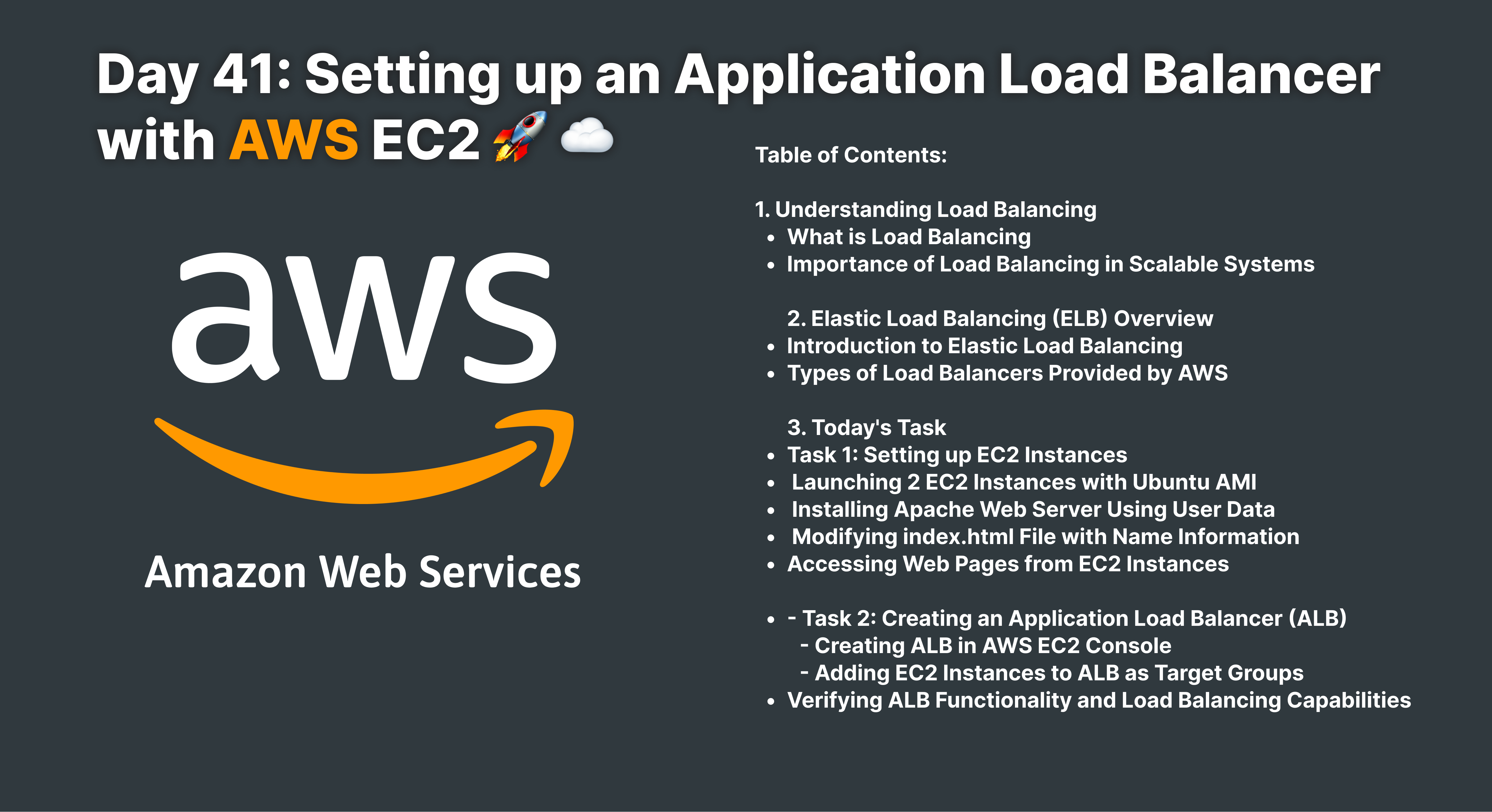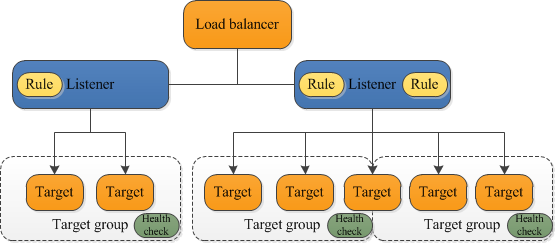Day 41: Setting up an Application Load Balancer with AWS EC2 🚀 ☁
 Yashraj Singh Sisodiya
Yashraj Singh Sisodiya
Welcome back to another exciting day of learning in our AWS EC2 journey! Today, we're going to delve into the essential concept of Load Balancing and explore how we can set up an Application Load Balancer (ALB) to distribute traffic across multiple EC2 instances.

1. Understanding Load Balancing
Load balancing is a critical component in modern computing systems, ensuring optimal resource utilization and improved reliability. But what exactly is load balancing and why is it so important?
What is Load Balancing?
Load balancing involves distributing incoming traffic across multiple servers or computing resources to ensure even workload distribution and prevent any single resource from being overwhelmed. This helps improve system performance, availability, and scalability.
Importance of Load Balancing in Scalable Systems
In scalable systems, load balancing plays a crucial role in ensuring that resources are efficiently utilized and that applications can handle varying levels of traffic. By distributing incoming requests across multiple servers, load balancers help prevent overloading of any single server, thus enhancing the overall reliability and performance of the system.
2. Elastic Load Balancing (ELB) Overview
Elastic Load Balancing (ELB) is a service provided by Amazon Web Services (AWS) that automatically distributes incoming traffic across multiple EC2 instances. Let's explore the basics of ELB and the different types of load balancers it offers.
Introduction to Elastic Load Balancing
ELB simplifies the process of load balancing by automatically distributing incoming traffic across multiple EC2 instances. It helps improve the availability and fault tolerance of applications by ensuring that traffic is routed to healthy instances.
Types of Load Balancers Provided by AWS AWS offers three types of load balancers:
Application Load Balancer (ALB): Operates at layer 7 of the OSI model and is ideal for applications requiring advanced routing and microservices.
Network Load Balancer (NLB): Operates at layer 4 of the OSI model and is suitable for applications requiring high throughput and low latency.
Classic Load Balancer (CLB): Operates at layer 4 of the OSI model and is suitable for applications requiring basic load balancing features.
3. Today's Tasks
Today, we have two exciting tasks lined up to help us dive deeper into load balancing and set up an Application Load Balancer (ALB) with AWS EC2.
Task 1: Setting up EC2 Instances In this task, we'll set up two EC2 instances with Ubuntu AMI, install the Apache Web Server using User Data, modify the index.html file with name information, and access web pages from the EC2 instances.
Launching 2 EC2 Instances with Ubuntu AMI
Installing Apache Web Server Using User Data
Modifying index.html File with Name Information
Accessing Web Pages from EC2 Instances
Task 2: Creating an Application Load Balancer (ALB) In this task, we'll create an Application Load Balancer (ALB) in the AWS EC2 Console, add EC2 instances to ALB as target groups, and verify ALB functionality and load balancing capabilities.
Creating ALB in AWS EC2 Console
Adding EC2 Instances to ALB as Target Groups
Verifying ALB Functionality and Load Balancing Capabilities
Stay tuned as we embark on this journey to set up an Application Load Balancer with AWS EC2, improving the scalability and reliability of our applications! 🌐🔗
Subscribe to my newsletter
Read articles from Yashraj Singh Sisodiya directly inside your inbox. Subscribe to the newsletter, and don't miss out.
Written by

Yashraj Singh Sisodiya
Yashraj Singh Sisodiya
I am Yashraj Singh Sisodiya, a 3rd Year CSE student at SVVV, born and raised in Shujalpur. Currently residing in Indore, I'm passionate about pursuing a career in DevOps engineering. My tech journey began with an internship at Infobyte, honing my skills as an Android Developer intern. Alongside my academic pursuits, I actively participate in co-curriculars, holding roles as Technical Lead at Abhyudaya and Cloud Lead at GDSC SVVV, while also serving as an MLSA of my college. I have a keen interest in Cloud Computing, demonstrated through projects such as User management and Backup using shell scripting Linux, Dockerizing applications, CI/CD with Jenkins, and deploying a 3-tier application on AWS. Always eager to learn, I'm committed to expanding my knowledge and skills in the ever-evolving tech landscape.